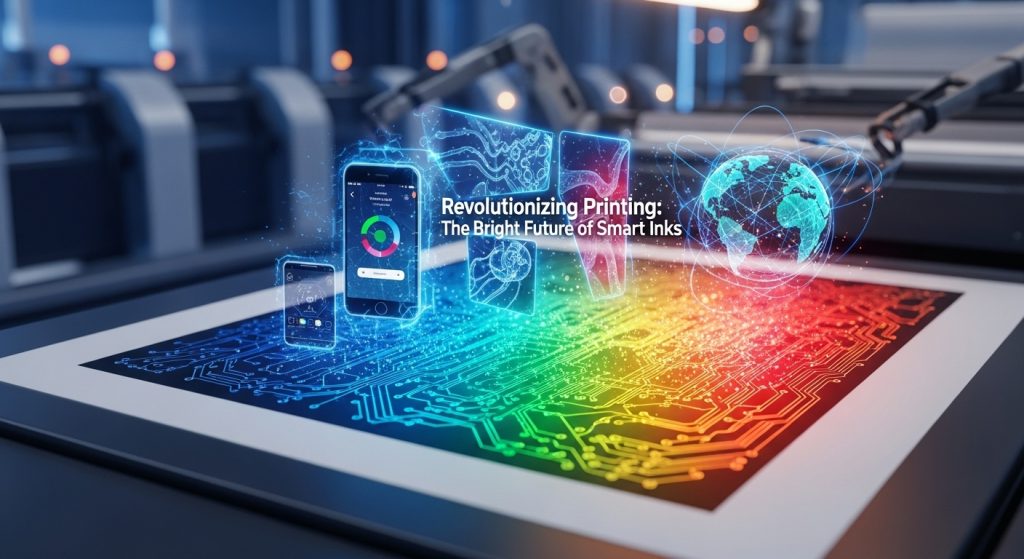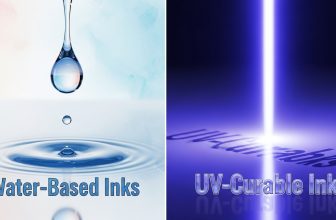
Explore the transformative potential of smart inks in printing technology, from their innovative applications to sustainability benefits and future developments.
Overview of Smart Inks in Printing Technology
Smart inks are innovative materials that change color or functionality in response to environmental stimuli, such as temperature, light, or pressure. They represent a significant advancement in printing technology, integrating intelligence into traditional printing processes. This shift towards smart ink technology is not only about enhancing functionality but also about addressing sustainability concerns, as these inks often utilize eco-friendly components compared to their conventional counterparts. With the global market for smart inks projected to grow significantly, driven by innovations in printing technology and increasing consumer demand, industries are beginning to adopt these versatile materials at an impressive rate.

The versatility of smart inks is particularly evident in applications across various sectors, including packaging, textiles, and electronics. These inks allow for enhanced user experiences, such as interactive packaging that can change appearance or provide information about the product’s condition. As businesses continue to prioritize sustainability, the adoption of smart inks is expected to rise, reflecting a broader trend towards environmentally responsible printing solutions.
Types of Smart Inks
Several types of smart inks are currently available in the market, each designed for specific applications. Conductive inks are primarily used in printed electronics, enabling the creation of flexible circuits and sensors. Color-changing inks, which react to temperature or light changes, enhance consumer interaction with products by providing visual feedback. For instance, thermochromic inks change color based on temperature, making them ideal for applications like temperature-sensitive labels. Additionally, eco-friendly inks made from biodegradable materials are gaining traction, as they reduce environmental impact and align with consumer preferences for sustainable products.
Photochromic inks, which react to UV light, are particularly useful in applications such as security printing and eyewear, where they can change color based on exposure to sunlight. As technology continues to evolve, the development of new smart ink formulations will likely expand the range of available options, fostering innovation in various industries.
Current Applications of Smart Inks
Smart inks are increasingly utilized in packaging to provide real-time data about product freshness and safety. For example, some food packaging incorporates smart inks that change color when the product is spoiled, enhancing consumer safety and reducing food waste. The integration of smart inks in textiles has also gained momentum, with wearable technology incorporating these materials to offer enhanced comfort and durability. This innovation allows garments to adapt to environmental changes, improving user experience in activewear.
Moreover, smart inks are being employed in marketing materials that change appearance to attract consumer attention. Dynamic visuals can engage customers more effectively, making products stand out in a crowded marketplace. Additionally, the exploration of smart inks in interactive gaming and augmented reality applications showcases their potential to enhance entertainment experiences.
Future Developments in Smart Ink Technology
The future of smart ink technology is promising, with advancements in nanotechnology paving the way for more responsive and versatile inks. Potential developments include the integration of artificial intelligence (AI) to optimize performance, allowing inks to adapt to user needs in real-time. This could lead to new applications in healthcare and military fields, where smart materials could provide critical information or enhance operational capabilities.
Research is also underway to create ink formulations that can self-repair, extending the lifespan of printed products and reducing waste. Additionally, the potential for inks that can store and transmit data could revolutionize printed electronics, allowing for enhanced functionality in everyday items like packaging and labels.
Environmental Impact and Sustainability Considerations
Smart inks often utilize biodegradable components, significantly reducing landfill waste and contributing to more sustainable practices in the printing industry. As consumer demand for eco-friendly products rises, the shift towards sustainable ink solutions becomes increasingly important. Compared to traditional inks, smart inks typically have a lower carbon footprint during production, further minimizing their environmental impact.

Moreover, many smart inks are water-based, which reduces harmful volatile organic compound (VOC) emissions associated with solvent-based inks. Innovations such as closed-loop recycling systems for smart ink cartridges are also being pursued, enhancing the sustainability of the overall printing process and aligning with global sustainability goals.
Comparison with Traditional Inks
Smart inks offer several advantages over traditional inks, particularly in terms of functionality and maintenance. For instance, smart inks can self-heal, significantly reducing clogging incidents that often plague conventional inks. This characteristic enhances the reliability of printing systems, allowing for smoother operation and reduced downtime. Additionally, smart ink cartridges can perform real-time ink composition analysis, providing valuable data to users about ink usage and remaining capacity, unlike traditional static cartridges.
Furthermore, smart inks generally exhibit higher durability and resistance to environmental factors, such as moisture and UV exposure, enhancing the longevity of printed products. As the cost-per-page efficiency of smart inks continues to improve, they are becoming more competitive with traditional inks, making the transition more appealing for businesses looking to modernize their printing processes.
Future Outlook on Smart Inks in Printing Technology
The transformative potential of smart inks in various sectors is substantial, with predictions indicating continued growth in smart ink technology over the next decade. Businesses are encouraged to explore adopting smart ink solutions to gain a competitive advantage, particularly as regulatory changes focusing on sustainability are anticipated. Smart inks hold the potential to revolutionize consumer products through enhanced interactivity and functionality, creating a more engaging experience for users.
As printing technology continues to evolve, the integration of smart inks will likely open new avenues for innovation, making it an exciting area to watch in the coming years. With ongoing research and development, smart inks are poised to play a crucial role in shaping the future of printing technology, offering innovative solutions that meet the demands of modern consumers and industries.





